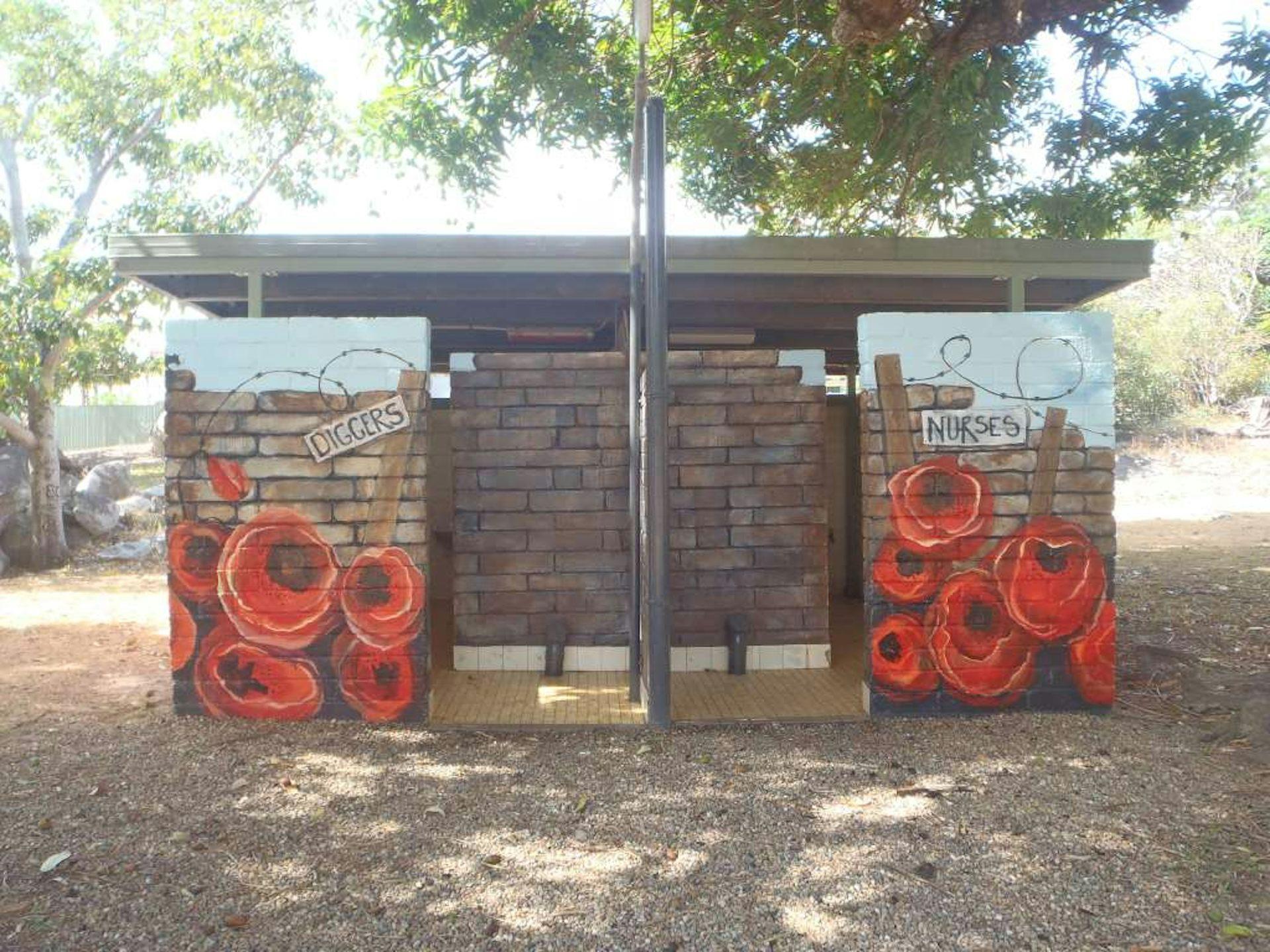
Can A Toilet Block Really Be A War Memorial?

'The Bunker' mural by Jane Eliza Dennis on a public toilet block in Cooktown, Queensland. Kate Eastick/Anzac Square, CC BY
Each year, Remembrance Day marks the anniversary of the armistice that ended the fighting of the first world war. Wreaths are laid at memorials across the country, and at 11am attendees pause for a minute of silence. But can a block of toilets really be a war memorial?
My ongoing research into 21st century Australian war memorials has found these spaces are increasingly used for both practical and symbolic purposes.
A brief historyThe first colonial war memorial on Australian soil is believed to be the 99th Regiment Memorial in Hobart, built in 1850 to commemorate the British troops who fought in the New Zealand Wars.
The 99th Regiment Memorial was built at the Anglesea Barracks, Hobart, in 1850. D/Wikimedia, CC BY-SA
Today, war memorial registers record more than 14,000 individual places and objects designed to remember different wars and those who served in them. Most do not include any physical bodies of the dead. Instead, they act as surrogate graves.
The number of memorials grows if you include places commemorating the Frontier Wars that took place between colonists and Aboriginal and Torres Strait Islander peoples from the 1780s to the 1930s. These conflicts are often left out of memorial registers.
Early Australian memorials tended to take traditional forms such as obelisks, honour rolls and avenues of honour. But opinions about what war memorials should look like started to change after the second world war.
Many communities decided to just add a plaque to their town's existing WWI memorial. Others, who had money to spare, wanted it to be spent on facilities that would help the community in a practical way. This meant utilitarian memorials such as parks, swimming pools and hospitals.
Modern functional memorialsToday, a variety of functional memorials are still being built both to remember war and create community facilities across Australia.
In 2014, the town of Two Wells in South Australia added two memorial benches next to their WWI obelisk originally built in 1921.
One of the memorial benches at Two Wells, South Australia. Paige Timms, Author provided (no reuse)
The pedestrian overpass on the Henty Highway in Portland, Victoria, remembers Reginald Walter Saunders, the first Indigenous Australian to become a commissioned officer.
And in Wyndham, New South Wales, a memorial park playground allows kids to swing, seesaw and slide while remembering those who served.
Sometimes, however, the commemorative purpose of a memorial can be overshadowed by its functional part.
A toilet block as a war memorialPublic toilets may seem like a strange addition to the list of places of remembrance. Even so, they're more common than you might expect.
In 2016, Gladstone, South Australia, painted a toilet block mural next to its restored war memorial fountain on the town's main street.
The Gladstone ANZAC mural was painted on a public toilet block in 2016. Liz Williamson/Virtual War Memorial Australia, CC BY
Another public toilet in Darwin had murals painted on either side in 2017 and 2022, for the 75th and 80th anniversaries of the Bombing of Darwin.
And in 2015, artist Jane Eliza Dennis painted the aforementioned toilet block in Cooktown, to go with the unveiling of a rebuilt Anzac Arch in the same park. According to one Tripadvisor reviewer:
These toilet blocks were already there, but new initiative saw them made into war memorials. The buildings provided large, blank canvases that were easy and cheap to transform.
Between form and functionThe primary function of a public toilet is to be used as a toilet. So it's hard to imagine people using these facilities would always be remembering the losses of war.
That said, even toilet block war memorials still remind some people, some of the time, which is more than enough for them to be considered memorials. They're an example of how difficult it can be to find the right balance between encouraging remembrance and creating a community facility.
As people across Australia pause for a minute of silence this Remembrance Day, it's also worth remembering the many ways we choose to commemorate war – even if they aren't all equally as dignified.

Legal Disclaimer:
MENAFN provides the
information “as is” without warranty of any kind. We do not accept
any responsibility or liability for the accuracy, content, images,
videos, licenses, completeness, legality, or reliability of the information
contained in this article. If you have any complaints or copyright
issues related to this article, kindly contact the provider above.
















Comments
No comment